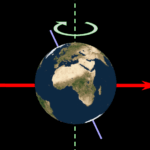Zoals we inmiddels weten, moet het klimaatalarmistische vuurtje regelmatig worden opgepookt. Dit keer was het Karel Drijver van het Wereld Natuur Fonds (WNF) die zich van deze taak kweet.
In Rypke’s ‘postings’ is vaak gewezen op het propagandakarakter van de ‘voorlichting’ van het WNF. Een kras voorbeeld daarvan werd onlangs weer geleverd in Umberto Tan’s ‘Late Night Show’. (Zie hier, vanaf 16.) Daarin kwam Karel Drijver, aangekondigd als oceaanexpert, aan het woord die met zorgelijk gelaat wees op de aantasting van Australische koraalriffen. De voornaamste boosdoener was natuurlijk weer de opwarming van de aarde (die sinds 1998 nagenoeg niet heeft plaatsgevonden), veroorzaakt door de mens. Het ging weer eens slechter dan we dachten! 95 % van de Australische koraalriffen zou thans zijn aangetast door de opwarmings’golf’.
Het verhaal over het afsterven van de koralen werd door hem vooral geplaatst in de context van de de nakende opwarmingsapocalyps. ‘Als wij niet zorgen dat het klimaat in balans komt (!?), dan gaan dit soort gebieden uiteindelijk verloren.’ Aldus Drijver. Volgens hem doet Australië in dit verband ook te weinig aan hernieuwbare energie – zonne– en windenergie. Daarin hebben ze veel te weinig geïnvesteerd. Het land zou voor 100% op hernieuwbare energie kunnen leven !?
Toegegeven, vervuiling door meststoffen uit de landbouw, riolering en sedimenten die door de rivieren in zee worden geloosd, werden ook door Karel Drijver genoemd. Maar in zijn verhaal lag het accent toch op klimaatverandering.
Op de vraag wat wij persoonlijk zouden kunnen doen om verdere schade te voorkomen, antwoordde hij: ‘Duurzame vis eten op vakantie.’
Om het maar vriendelijk te zeggen: het was een kluwen van onnavolgbare logica. Een regelmatig bezoek aan Climategate.nl zou Karel Drijver waarschijnlijk in de toekomst kunnen behoeden voor dit soort wartaal.
Maar wat is er nu werkelijk aan de hand? Een snelle zoektocht op internet levert resultaten op die een heel ander licht werpen op deze materie.
Op 6 januari 2015 publiceerde de website ‘Die Kalte Sonne’ een ‘posting’:
Unerwartete Wendung: Korallen sind viel Wärmestress-resistenter als vormals befürchtet.
Op 12 januari 2015 deed de website er nog een schepje bovenop met:
In deze ‘postings’ kwam een grote hoeveelheid literatuur aan de orde, die een heel ander beeld gaf dan het klimaatalarmisme dat Karel Drijver ons voorschotelde.
Maar venijniger was de analyse van Walter Starck op de website van Anthony Watts (WUWT) van 9 oktober 2012, onder de titel: ‘Reef Alarmists Jump The Shark’. Ik pik er een aantal krenten uit:
The Great Barrier Reef (GBR) is doomed again. [Noot HL: Dat was dus in 2012.] A recent widely publicised scientific study reports the dramatic finding that it has lost half its coral in the last 27 years. Forty-eight percent of the loss is attributed to storm damage, with bleaching and crown-of-thorns starfish being responsible for 10% and 42% respectively. The average annual rate of coral loss over the 27-year period was estimated to be 3.38% and growth was put at 2.85%, leaving a net decline of 0.53% per year. Further effort and research on starfish control is suggested to be the most promising means of reversing the decline. Elimination of the loss due to starfish would leave a net gain of 0.89%.
While the news reports present the appearance of scientific precision and certainty, examination of the study itself reveals a number of doubtful assumptions, undisclosed conditions and instances where strong conflicting evidence is unmentioned. ….
The study … states:
“The recent frequency and intensity of mass coral bleaching are of major concern, and are directly attributable to rising atmospheric greenhouse gases.”
No evidence exists for this claim. The mass-bleaching events of recent decades have coincided with surface water warming resulting from periods of extended calm associated with strong El Niño events. This impedes normal evaporative cooling as well as wave driven mixing. ….
The report further states:
“Water quality is a key environmental driver for the GBR. Central and southern rivers now carry five- to ninefold higher nutrient and sediment loads from cleared, fertilized, and urbanized catchments into the GBR compared with pre-European settlement.”
No actual measurements of pre-European sedimentation rates exist. These are only estimates and extrapolations from unverified proxies which may or may not represent what is claimed. What is certain is that the inshore areas of the GBR are heavily blanketed in sediments that have accumulated over thousands of years and turbidity in coastal waters is overwhelmingly governed by re-suspension of these sediments through wave action, not by current day runoff from the land. …
The claim is made that, “Reducing COTS (crown of thorns starfish) populations, by improving water quality and developing alternative control measures, could prevent further coral decline and improve the outlook for the Great Barrier Reef.”
This is entirely supposition, and the actual result could well be the opposite. After nearly half a century and over a hundred million dollars in research, the COTS outbreaks are no better understood, nor are they any more of a threat, than they ever were. They continue to occur sporadically as they do with other starfishes and sea urchins in many other places. Such outbreaks also often occur on isolated oceanic reefs far from any runoff or human influence.
There is nothing to indicate the GBR outbreaks are due to anything other than natural causes. In fact they may even play a beneficial role in the maintenance of coral diversity as the starfish selectively prune the fast growing branching and plate-like species permitting the slower growing forms to catch up. This is especially noticeable a few years after severe storm damage, when the faster growing species tend to predominate and when COTS outbreaks are likely to occur.
The report concludes that, “…coral cover on the GBR is consistently declining, and without intervention, it will likely fall to 5–10% within the next 10 [years].”
Interestingly, this particular claim is conflicted by the most comprehensive previous study (published only three years earlier by the same institution) which, “…found no evidence of consistent, system-wide decline in coral cover since 1995.”
If the experts were wrong then is there any reason to think they are right now?
There is abundant reason to question the validity of the findings. The imminent demise of the GBR has been an ongoing claim for nearly half a century and has funded a small industry of researchers, bureaucrats and activists devoted to “saving” the Great Barrier Reef from a variety of imagined “threats”. In recent decades this industry has cost the Australian taxpayer well over $100 million per year and the cost has been increasing. Although no practical solutions have ever been found, the demand for hypothetical solutions to imaginary problems seems unlimited. …
What if for once the experts are right?
The core claim is that the reef has lost half of its coral in the past 27 years and that
“Without significant changes to the rates of disturbance and coral growth, coral cover in the central and southern regions of the GBR is likely to decline to 5–10% by 2022.”
If this is true, the implications for future research and management are profound. It means that the current condition of the GBR is essentially no better than that of the heavily exploited and effectively unmanaged reefs of the Caribbean or SE Asia. It means all the money and effort that has gone into management and research has been an abject failure. It means that the promised “resilience” to environmental impacts that was the major justification for greatly expanded green zones and sundry other stringent and costly restrictions on productive usage have achieved nothing, and that the vaunted resilience has been just another theoretical academic fantasy. It means that the claims of having the best managed reefs in the world have been only a self-serving delusion. It means that all the past assertions of successful management have been untrue and the research supposedly supporting it has been either grossly incompetent or a deliberate misrepresentation. …
Personally, I suspect that the surest way to save the reef would be to cut funding for management and research by half and link future cuts or increases to the balance of economic and environmental outcomes. I have little doubt that would soon effect a miraculous recovery.
Lees verder hier.
Aldus enkele krenten uit het opmerkelijke betoog van Walter Starck.
Voor mijn eerdere bijdragen over klimaat en aanverwante zaken zie hier, hier, hier, hier en hier.






Er moet blijkbaar naast het dossier NOS nu ook een dossier RTL worden bijgehouden…
Het gaat om dit onderzoek die vrijwel alle media haalde:
http://www.ad.nl/ad/nl/5596/Planet/article/detail/4271696/2016/03/29/Het-gaat-veel-slechter-met-Great-Barrier-Reef-dan-gedacht.dhtml
Je kan je afvragen of je de WNF kan verwijten dat ze dit nakakelen.
Grootschalige ernstige verbleking is nu sinds 1998 3 keer voor gekomen. De oorzaak is temperatuurverandering. Die voorkomt bij El Nino. Omdat er geen bewijzen zijn gevonden dat voor 1998 dergelijke verbleking heeft plaatsgevonden is het ook niet zo vreemd dat aan klimaatverandering wordt gedacht. Ook niet zo vreemd dat mensen zich hier zorgen over maken.
Lozingen op zee ligt meer voor de hand; voor de meeste landen is het dumpen van afval(water) in de zee de gewoonste zaak van de wereld.
En het verbaasde mij wel. Het Coral Reef Watch Satellite Monitoring vanNOAA gaf nu niet direct code diep rood aan. Geen zwaar alarmerende berichten van die kant.
http://coralreefwatch.noaa.gov/satellite/index.php
uitvergroting:
http://coralreefwatch.noaa.gov/satellite/bleaching5km/images_current/cur_b05kmnn_max_r07d_baa_gbr_930x580.gif
Maar goed, vooralsnog moeten we de professor in zijn vliegtuigje maar geloven… Of niet.
Het lullige is dat je een wetenschapper niet meer op voorhand kunt geloven.
Teveel dubbele agenda’s/bodems en de integriteitwaakhonden blaffen niet, laat staan dat ze bijten.
Volgens de duik industrie is slechts 5% aangetast. Die hebben dan ook andere belangen dan de vliegende professor.
http://www.brisbanetimes.com.au/queensland/great-barrier-reef-coral-bleaching-queensland-tourism-body-downplays-damage-20160404-gny9nr.html
Over…
Natuurlijk moet je wel even zoeken:
http://www.nasa.gov/topics/earth/features/coral-damage.html
Misschien dat de niet aflatende energie waarmee de alarmisten urban legends (gewoon leugens dus) de wereld in spuien. Coral bleaching van het Great Barrier reef wordt dus toegeschreven aan El Nino. Duidelijk. En natuurlijk wordt El Nino weer toegeschreven aan AGW en dat is klinkklare onzin:
https://en.wikipedia.org/wiki/El_Ni%C3%B1o%E2%80%93Southern_Oscillation#/media/File:Soi.svg
El Nino’s zijn van alle tijden en de langjarige trend is 0.
Inderdaad moet je daar wel naar zoeken. Wie zoekt die vindt, wie niet zoekt vindt niet. Vroeger werd er ook niet intensief gespeurd naar verbleking met vliegtuigjes. De relatie tussen de verbleking en temperatuurverandering is 1 op 1 aangetoond. De relatie met El Nino events ook. Met 100% zekerheid. Waar je afwijkend over kunt denken is of die toename van T veroorzaakt is door de broeikasgassen. Het is op zich niet vreemd dat een WNF of wie dan ook de algemeen heersende opvatting van de wetenschap volgt.
Wat betreft je citaat:
” During the following three-plus decades, Dustan, an ocean ecologist and biology professor at the College of Charleston in South Carolina, has witnessed widespread coral reef degradation and bleaching from up close. ”
Om hieruit te concluderen dat Dustan dus bleaching VOOR 1998 heeft waargenomen is dus aanvullende informatie nodig. PLUS drie decades na 1974 is namelijk 2004. De 1998 en 2002 bleaching events hebben dan al plaatsgevonden.
Ik hoop Andre dat je aanvullende informatie hebt. Zou leuk zijn, dan kan je direct een blog schrijven met een nieuwtje…..
En je hoeft niet ver te zoeken:
ftp://ftp.unc.edu/pub/marine/brunoj/Bleaching%20attribution%20papers/Baker%20et%20al%202008%20bleaching%20review.pdf
ruim voor 1998 was de relatie tussen bleaching en temperatuur al waargenomen. (zie de verwijzingen naar de papers onder 1.2)
De bewering: ” Wetenschappers hebben geen bewijs gevonden van dit fenomeen voor het eind van de 20ste eeuw. ” zoals we nu massaal vinden in de recente persberichten is dus onjuist.
Bedankt Herman,
Je bent hier op een veel voorkomend probleem gestuit. Er is altijd wel een extremist ergens, die waarheid en wenselijkheid met elkaar verwart en op basis daarvan sprookjes de wereld in helpt. En ons probleem is dat wanneer het wenselijk is dat zijn sprookje waar is, dat we hem op zijn mooie ogen geloven. Zo ontstaan alle hypes, inclusief global warming en coral bleaching door global warming.
Er is maar één middel hiertegen, gegronde achterdocht, altijd, en meer achterdocht naarmate het aangeboden sprookje door een bevriende autoriteit wordt gebracht en wanneer het exact is zoals we dachten en vonden dat het zou moeten zijn.
Herman
De heersende opvatting van de wetenschap of de politieke agenda van het IPCC?
Sorry Hugo, maar dit soort kinderachtige opmerkingen vind ik zonde van mijn tijd.
En deze :
Hoegh-Guldberg and Fine (2004) “cold conditions can have an almost identical outcome to warm water bleaching in coral reefs.”
Of deze :
http://www.ncbi.nlm.nih.gov/pmc/articles/PMC3154280/
” Severe 2010 Cold-Water Event Caused Unprecedented Mortality to Corals of the Florida Reef Tract and Reversed Previous Survivorship Patterns “
En het is goed om eens de tweets van de vliegende professor te lezen om een beeld van de beste man te krijgen. Nogal vooringenomen en staat bol van activisme.
https://twitter.com/ProfTerryHughes?ref_src=twsrc%5Etfw
Het enige wat we hierin hoeven te onthouden is dat koralen al onzettend lang bestaan. Ze zijn er al vele miljoenen jaren. In die tijd hebben ze ijstijden en interglacialen overleefd. Stijgingen en dalingen van de zeespiegel van meer als 150 meter, het was geen probleem voor de koralen, ze zijn er nog steeds. Hooguit groeien ze nu op plaatsen waar ze vroeger niet waren, en waar ze vroeger wel waren zijn ze nu niet meer.
Kortom,
er is geen enkel probleem met de koraalriffen.
Next … !
Herman
Als je dat zonde vindt mis je de kern van het probleem wat tegenwoordig wetenschap genoemd wordt.
Blijft de vraag: eet de meneer met het vliegtuigje “duurzame vis”?
Maar wat is in godsnaam “duurzame vis”?
Wij zijn nog steeds in afwachting van de terugkeer van de man die van vijf broden en twee vissen 5.000 stalkers te eten gaf. Over duurzame vis gesproken.
En laten we het dagelijkse coral reef nieuws vanuit down under maar op de voet volgen: Sterft alles af of zal het rif herstellen?
Queensland’s Environment Minister Steven Miles said the latest update on the coral bleaching event impacting the reef was “deeply concerning” with the Great Barrier Reef Marine Park Authority Chair Russell Reichelt confirming “many of the corals from the central region to the north were extremely bleached”
http://www.smh.com.au/environment/climate-change/great-barrier-reef-coral-bleaching-concerning-govt-week-after-mine-approval-20160408-go1xmd.html
“Coral bleaching on the Great Barrier Reef is “major and significant”, federal Environment Minister Greg Hunt says.”
Australian Institute of Marine Science chief executive John Gunn said while there had been bleaching across the northern reef, there has been some growth elsewhere.
“In the south, we’ve seen an almost doubling in the amount of coral that we last saw in 2012,” Mr Gunn said.
http://www.abc.net.au/news/2016-04-07/barrier-reef-coral-bleaching-significant-minister-greg-hunt/7308394
wat is eigenlijk het belang van dat koraal, laat het toch verbleken en zich herstellen later. Hebben wij niets mee te maken.
Als je het over ‘opwarming’ wil hebben moet je naar de temperatuur kijken, en niet naar een afgeleide proxy als koraal verbleking.
Overigens, aquaria genoeg om het onder gecontroleerde omstandigheden te bekijken.
Veldwerk is een steekproef en zonder verdere kennis van de eigenschappen van de populatie is het groene vingerwerk, rijp voor de prullenbak.
Herman
Heb je ook een conclusie op grond van het bovenstaande?
Wat is het politieke doel van de minister?
Meer geld voor de begroting, helikoptervluchten zijn niet goedkoop ;-)
Ondertussen in de coral soap.
De Guardian komt met een verhaal dat environment minister Greg Hunt de woorden van Attenborough verdraaid zou hebben.
http://www.theguardian.com/environment/2016/apr/08/greg-hunt-rebuked-by-film-maker-after-great-barrier-reef-verdict
En in Thailand zijn ze nu ook gealarmeerd.
http://www.bangkokpost.com/news/environment/927809/andaman-coral-reef-sites-may-close
Daaruit wat interessante gegevens.
“The natural occurrence took place in 1991, 1995, 2003, 2005 and 2007. However, the worst case was in 2010 where 66.9% of coral reefs in the northern part of the Andaman Sea and 39% in the southern part died from bleaching.”
En dan komt het:
“The biologist said the recovery from 2010 is satisfactory in many areas but the department is concerned that these areas may soon be affected by new bleaching. ”
Dus als bijna 70% afsterft kan je toch rekenen op herstel.
En hoe gaat het verder met het koraal. De Washington Post komt met een verhaal over het koraal van Kiritimati. ” A recent expedition has revealed that the reefs around Kiritimati have suffered a CATASTROPHIC mass die-off — an event that epitomizes what may be an ugly truth about the ability of coral reefs around the world to adapt to the growing threat of climate change. ”
https://www.washingtonpost.com/news/energy-environment/wp/2016/04/12/why-dead-coral-reefs-stir-fears-of-dangerous-climate-change/
‘ ugly truth’ dus. Dat is nog eens wat anders dan ‘inconvenient truth’
Nieuws van het koraal. Op Christmas Island is het rif net een “ghost town”
http://www.cbc.ca/news/canada/british-columbia/coral-reef-christmas-island-dead-el-nino-1.3537721
Hoe is het inmiddels met het koraalnieuws. Vooral meer van hetzelfde. Nu wordt de voorspelling toegevoegd dat niet alleen het koraal verbleekt maar ook voor de helft zal afsterven. http://nos.nl/artikel/2103186-massale-koraalsterfte-door-verbleking-great-barrier-reef.html
Wordt vervolgd….
Reef system with 10,000 km2 found at the Amazon River mouth
“..
Against all the odds, 39 scientists from nine Brazilian and one North-American universities mobilized two expeditions to the mouth of the river in other to map the bottom of the ocean in the outer shelf. Two previous studies – from the 1970s and 1980s – reported the findings of single samples of carbonatic structures. None suggested the existence of a reef system underneath the river plume. Surprisingly, the researchers found reefs in a complex as extensive as 1,000 km, in depths from 10 to 120 meters, with rhodolith beds, live calcareous algae, sponges, corals and hydrocorals colonies formed from 13,000 years ago till the present. The system is an habitat for 73 species of fishes and six species of lobsters.”
http://www.eurekalert.org/pub_releases/2016-05/uosp-rsw050216.php
Taaie rakkers die bloemdieren.